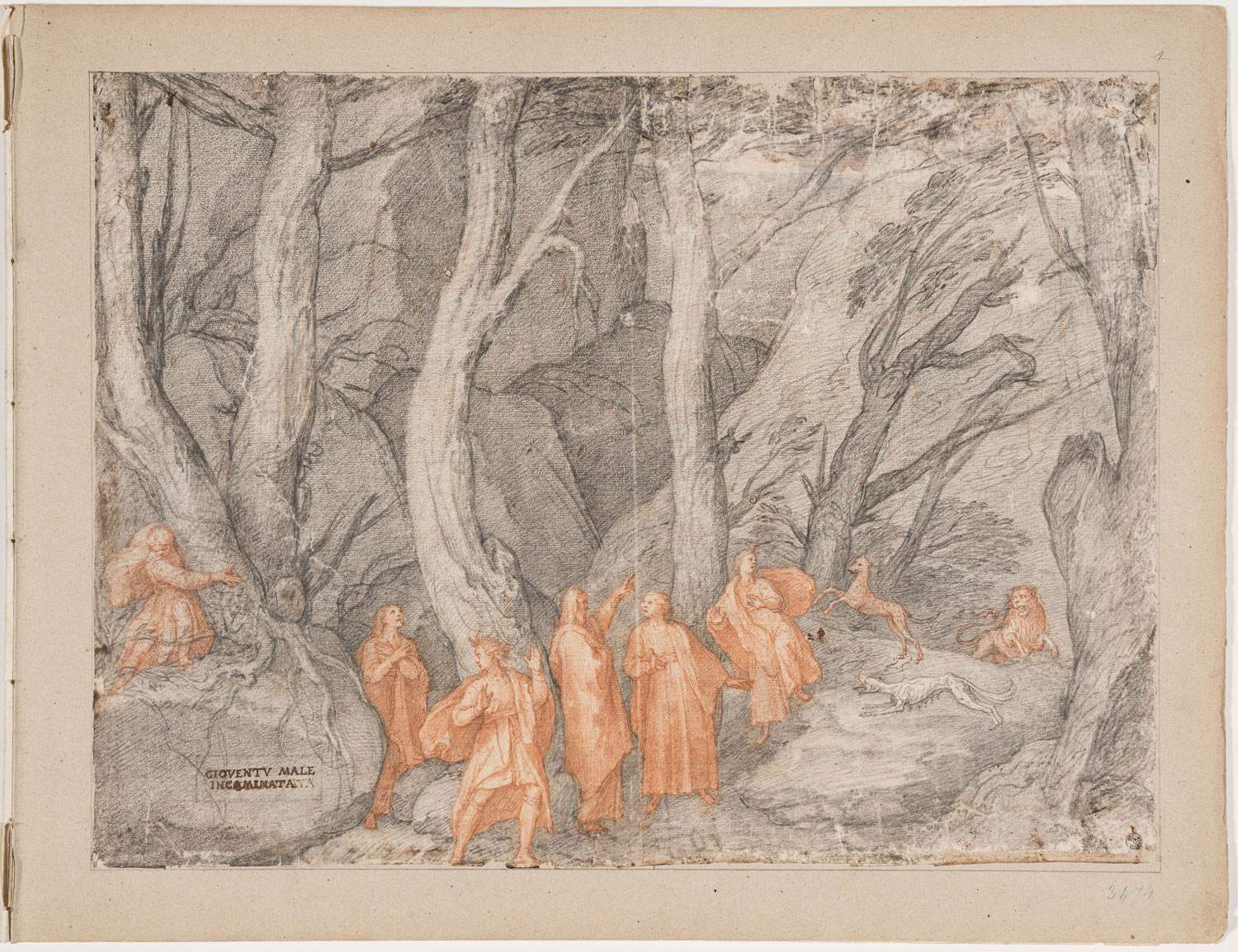The year dedicated to the celebrations of the seven hundredth anniversary of the death of Dante Alighieri (Florence, 1265 - Ravenna, 1321) begins immediately, and the year of art also begins, albeit in a virtual form: for the first day of 2021, in fact, the Uffizi opens a virtual exhibition dedicated to the illustrations of the Divine Comedy made by Federico Zuccari (Sant’Angelo in Vado, 1539 - Ancona, 1609). The exhibition, titled A riveder le stelle (To See the Stars Again), includes all the drawings (there are eighty-eight) that the artist from the Marche region executed in the late 16th century to illustrate Dante’s poem, for the first time digitized in high-definition and for the first time visible online.
Zuccari’s “Dantesque” sheets are all preserved at the Uffizi Galleries and, for this virtual exhibition, they make use of a didactic apparatus compiled by Donatella Fratini, curator of the Uffizi’s Drawings from the Sixteenth to the Eighteenth Centuries, who has imagined a “step-by-step” itinerary to bring to web visitors the Zuccari drawings that constitute the most important illustrative cycle of the Divine Comedy before the nineteenth century. The cycle was made between 1586 and 1588 during the artist’s stay in Spain, and its sheets entered the Uffizi collection in 1738 thanks to the donation of Anna Maria Luisa de’ Medici, Electress Palatina. Kept ever since in the Cabinet of Drawings and Prints, the drawings have been exhibited to the public, and only partially, on only two occasions: in the great Dante exhibition held in Florence’s Palazzo Medici-Riccardi in 1865 and at Dante’s House in Abruzzo in 1993. Apart from these episodes, Zuccari’s drawings have remained mostly known to a limited audience of scholars and enthusiasts: in fact, like all works on paper, they are normally kept in protected, thermoregulated rooms without light and can (except for limited study needs) be exhibited only every five years. Hence, too, the Uffizi’s decision to digitize in its entirety, making it available to all, this substantial nucleus of folios that is physically fragile and by its nature not suitable for regular consultation.
The itinerary illustrated by Zuccari, who with his brother Taddeo was a leading exponent of late Italian Mannerism, begins with the dark forest in which Dante loses his “straight path” until he reaches the highest heavens of Paradise, in a complex interplay of cross-references between words and images. The sheets were in fact anciently bound in a volume: opening it, the illustration on the right page corresponded, on the left, to the transcription of verses from the poem and a brief commentary by the artist himself. These texts are also included in the virtual exhibition A riveder le stelle.
“So far,” declares the director of the Uffizi, Eike D. Schmidt, “these beautiful drawings have been seen by few scholars and exhibited to the public only twice and only in part. Today they are published in full and with a didactic-scientific commentary on the Uffizi website, where from now on they will be freely available for consultation. It is a real pride for the Galleries to open the 18th century since the death of the great poet by making this extraordinary collection of graphic art available to all. Valuable material not only for those doing research but also for those who, passionate about Dante’s work, are interested in delving into it to follow, as Alighieri says, virtute e canoscenza.”
To be able to visit the virtual exhibition, just log on to the Uffizi website.
Image: the illustration of the dark forest
 |
| Uffizi launches virtual exhibition on Dante with Federico Zuccari's Commedia drawings |
Warning: the translation into English of the original Italian article was created using automatic tools. We undertake to review all articles, but we do not guarantee the total absence of inaccuracies in the translation due to the program. You can find the original by clicking on the ITA button. If you find any mistake,please contact us.